This program is designed to proactively detect pests before they have a chance to establish and cause significant damage. Insect traps are placed throughout the county to catch exotic pests of interest. Early detection and eradication of harmful pests protects California's agricultural industry, home gardens, park and natural resources, and reduces the need for pesticides.
Traps can be found near or on host plants that are attractive to the insect, including a variety of fruit trees, shade trees, and shrubs. Most of the traps are placed on residential properties with the permission of the homeowners. A single confirmed pest find will trigger trap delimitation; substantially increasing trap density around the area. Further finds may trigger pest eradication efforts.
Asian Citrus Psyllid
Asian Citrus Psyllid (ACP), Diaphorina citri Kuwayama, is an insect that can transmit a bacterium that infects citrus with citrus greening disease, also known as Huanglongbing (HLB), threatening the citrus industry.
Learn how to help California's citrus industry.

Asian Citrus Psyllid
Photo by Jeffrey W. Lotz, Florida Department of Agriculture and Consumer Services, Bugwood.com
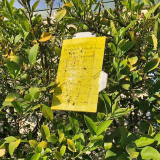
Yellow panel traps are placed around citrus host trees to act as a flower mimic and trap ACP with sticky glue.
European Grapevine Moth
European Grapevine Moth (EGVM), Lobesia botrana, was first detected in the United States in 2009. Its larvae are destructive feeders of the interior of grapes.
The red delta trap is baited with a female sex pheromone to attract male European grapevine moths. Traps are mainly placed on or near grapevines in vineyards.
Learn more about this vineyard pest.
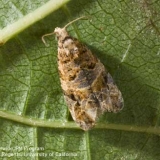
Photo by Jack Kelly Clark
Fruit Flies
Exotic fruit flies of the genera Anastrepha, Bactrocera, and Ceratitis pose a threat to agricultural commodities. Their larval stages cause destruction in over 400 host plants. The flies mainly enter the state through human transport and activity, so please, Don't Pack a Pest.
Learn more about fruit fly quarantines in California.
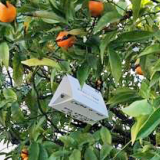
Jackson traps are a type of delta trap that utilize female sex pheromones for specific fruit flies, including Mediterranean, Melon, and Oriental Fruit Fly. A small dose of pesticide is used to immobilize the insect after it enters the trap.
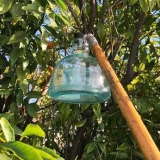
McPhail traps are generalist fruit fly attractants that allow for monitoring of fruit flies that do not have a specific pheromone developed to attract them, such as Mexican Fruit Fly.
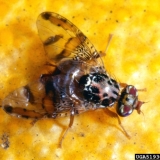
Mediterranean Fruit Fly
Photo by Florida Division of Plant Industry, FL Dept of Ag & Consumer Services, Bugwood.org
Glassy-Winged Sharpshooter
Glassy-Winged Sharpshooter (GWSS), Homalodisca vitripennis, is an insect pest that can transmit a bacterium, Xylella fastidiosa, that infects grapevines with Pierce's disease, threatening vineyards and the wine industry.
Learn about identification, biology and management.
Photo by Charles Ray, Auburn University, Bugwood.org
The yellow panel trap's bright color acts as a flower mimic and once an insect lands, it is trapped in sticky glue.

Spongy Moth and Gypsy Moth
European and Asian gypsy moth (EGM & AGM), Lymantria sp., larvae can feed on over 500 host plants, but they are particularly notorious for their destructive hardwood tree defoliation in forests.
In March 2022, the Entomological Society of America (ESA) announced a new common name for the European gypsy moth. It will now be called the European spongy moth due to the insect's distinctive spongy-textured egg masses. The ESA is unable to change the name of the Asian gypsy moth subspecies as it is outside their scope.
Spongy moth delta traps are baited with a female sex pheromone to attract males towards its sticky substance. They are often placed in areas with frequent travelers, such as campgrounds and RV parks.
Learn about how you can protect our landscapes.

Image by USDA APHIS PPQ, Bugwood.org
Japanese Beetle
Japanese Beetles, Popillia japonica, are highly destructive with larvae that feed on turf grass, while adult beetles are generalist feeders on over 300 plant species including flowers, fruits, and vegetables.
Green colored Japanese beetle traps are baited with floral scents and a female sex pheromone to lure adults.
Learn about managing the beetle in your yard.

Photo by Joseph Berger, Bugwood.org